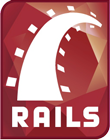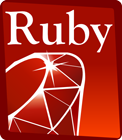Advanced Technology Made Simple
Delivering the best of open-source with full support, and without the chaos
A Cloud CMS That's Ready to Take On the Most Complex Sites
The Webvanta Cloud CMS is a powerful, flexible content management system. Unlike most other systems of comparable capability, the Webvanta Cloud CMS is a managed, hosted solution, so you never need to deal with servers, backups, or software updates.

Combining the industry's best services and open-source software with our proprietary application layer has yielded a powerful, reliable, and easy-to-use system.
Advanced Technology Made Easy


We built the Webvanta Cloud CMS using the Ruby on Rails web application framework and the Ruby programming language.
We've picked the best open-source software, added our own application layer, and operate it on a redundant, high-end set of servers.
Enterprise-Class Server Cluster

Our server cluster uses Amazon Web Services EC2 servers for front-end, application, database, and utility servers. Amazon's S3 storage service provides highly reliable distributed storage.
We use Amazon's Elastic Load Balancer to spread the load among the servers and to provide fault tolerance. Redis Labs provides a large, fault-tolerant, disk-backed in-memory cache.
Our servers are managed and monitored 24/7/365 by Engine Yard.
Software Stack
Our servers use the Linux operating system, nginx HTTP servers, Unicorn application servers, Redis key-value store, Resque queuing system, and a master/slave pair of MySQL database servers.
WebvantaScript, the markup language that Webvanta sites use to retrieve information from the database, was derived from a syntax and parser called the Radius tag language, which is part of the Radiant CMS, created by John Long.
Site search is implemented with the Thinking Sphinx client for the Sphinx full-text search engine.
Our visual editor is based on FCKeditor. The code editor is based on CodeMirror.
Leading-Edge Front-End Code
The Webvanta Cloud CMS supports all front-end technologies, from HTML5 and CSS3 to jQuery and ActionScript.
Our preferred front-end stack is continually evolving, but it includes:
- HTML5
- CSS3
- jQuery
- Bootstrap
The Bootstrap framework makes it easy to create responsive sites, and the jQuery framework makes available a vast range of plugins.

